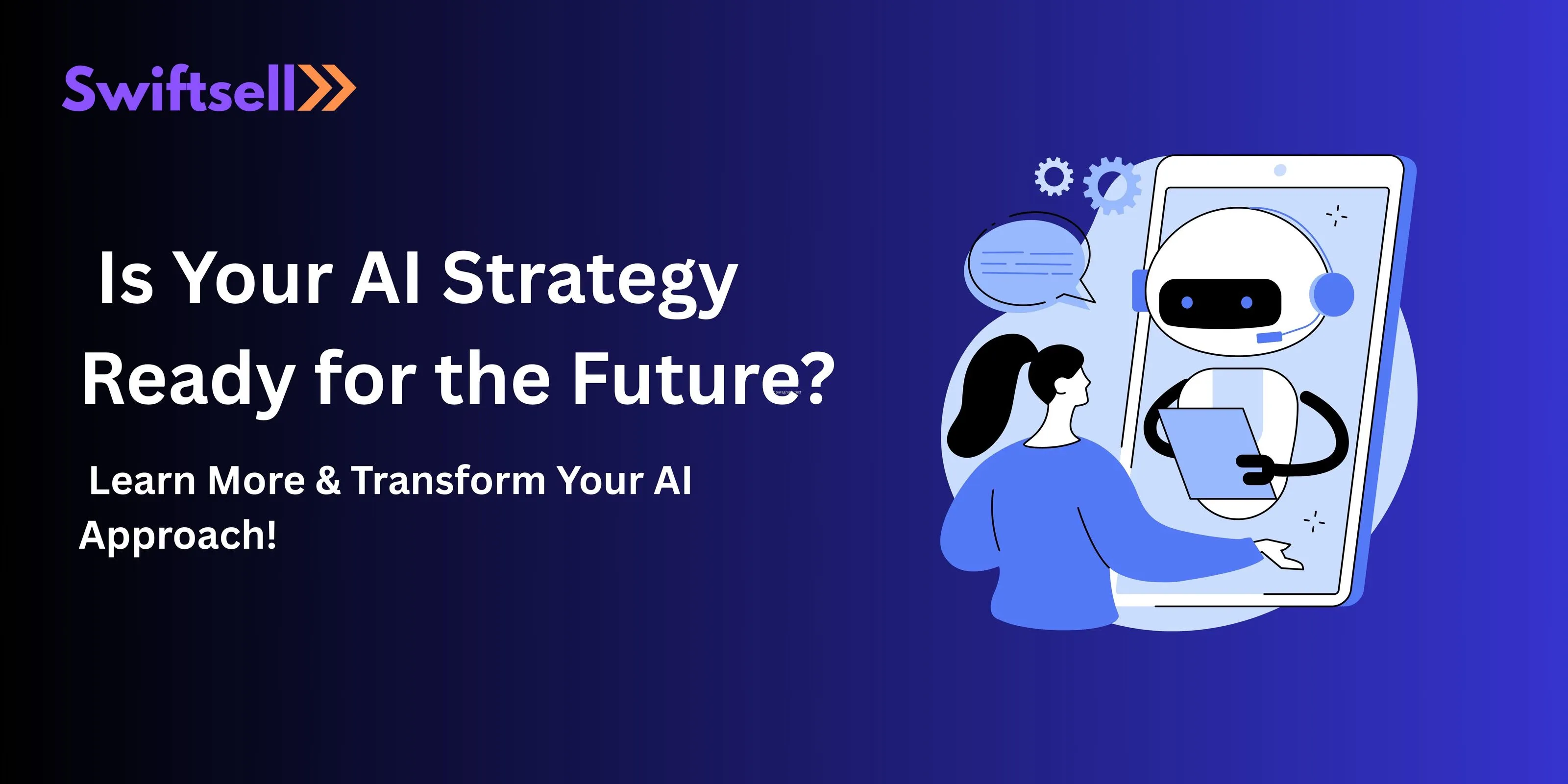.webp)
Shubham Patil
Chief Marketing Officer

Raj Solanki
Co-Founder
March 5, 2025

Artificial intelligence (AI) is advancing faster than ever, with Large Language Models (LLMs) at the forefront of this revolution. These powerful models, such as GPT-4, Claude, and the upcoming Gemini, are transforming how businesses operate by automating processes, enhancing customer engagement, and scaling operations. However, the rapid evolution of LLMs presents a unique challenge: how do businesses ensure their AI strategies remain relevant as new models emerge?
To stay ahead, organizations must develop AI strategies that are adaptable, scalable, and compliant with evolving regulations. This blog outlines the challenges posed by the fast-paced advancements in LLMs, key steps to future-proof your strategy, and how Swiftsell can help you build a robust AI framework.
LLMs have become indispensable across industries, elevating customer interactions, automating workflows, and processing vast amounts of data. From virtual assistants to advanced analytics tools, these models allow businesses to scale operations with minimal manual intervention. Regardless of sector, companies leveraging LLMs experience:
Despite these benefits, the turbulence of rapid AI advancements introduces several obstacles for businesses adopting these tools.
Leading AI providers like OpenAI regularly release newer, more powerful versions of LLMs. While these upgrades often bring improved capabilities, older models may become obsolete, rendering existing workflows incompatible.
Many AI-powered applications rely on integrations with multiple LLMs, APIs, and external business tools. Without a flexible architecture, adapting to newly released models can lead to costly reconfigurations.
With the rise of data protection laws such as GDPR and CCPA, businesses must design AI solutions that prioritize data security and comply with stringent regulations.
Enhanced LLM capabilities often come with greater computational demands, driving up costs dramatically. Businesses need to optimize usage to balance operational efficiency with budget constraints.
These challenges underscore the importance of crafting a well-thought-out, future-proof AI strategy.
To thrive in the dynamic AI landscape, businesses must implement strategies focused on adaptability and sustainability. Below are six essential steps to consider:
Building AI solutions that rely exclusively on a single provider creates a dependency that can limit adaptability. Instead, choose a model-agnostic approach that allows you to alternate between providers or leverage multiple LLMs simultaneously. This reduces the risk of vendor lock-in while expanding operational flexibility.
Develop AI solutions with an API-first, modular infrastructure. This ensures components of your AI system can be swapped or upgraded independently without affecting others. For example, replacing an outdated LLM becomes seamless when your system’s architecture is modular.
Regulations surrounding AI are becoming more complex each year. Implementing AI governance frameworks ensures:

As business goals evolve, so should your AI. Establish feedback loops that allow LLMs to learn continuously from user interactions. Reinforcement learning and human-in-the-loop mechanisms are effective ways to ensure your AI aligns with shifting priorities.
The computational requirements of LLMs can strain budgets, especially as you scale operations. To optimize costs, businesses should:
The future of AI goes beyond text-based interactions. LLMs are advancing toward multimodal capabilities, enabling models to process and respond to text, images, and voice. Businesses should consider integrating multimodal features into their long-term strategy to maintain competitiveness in an increasingly interactive world.
Swiftsell is uniquely positioned to help businesses adapt to the rapid evolution of LLMs. With a focus on enabling flexibility, scalability, and compliance, Swiftsell offers:
Swiftsell’s dedication to building future-ready AI solutions allows you to focus on achieving business goals while staying ahead of industry trends.
The field of AI is changing at an unprecedented pace. Businesses that reactively adapt to advancements risk falling behind, while those that build agile, proactive AI strategies are positioned to thrive. Future-proofing your AI approach involves more than adopting the latest tools. It demands careful consideration of scalability, cost-efficiency, and compliance.
An adaptive AI strategy is not just a nice-to-have but a necessity as LLMs continue to redefine industry standards. By following the steps outlined above and leveraging trusted AI partners like Swiftsell, your business can confidently navigate the complexities of the evolving AI landscape.
Are you ready to future-proof your AI strategy? Contact Swiftsell today for tailored solutions that keep you ahead in the AI revolution. Request a demo and take the first step toward sustainable innovation.